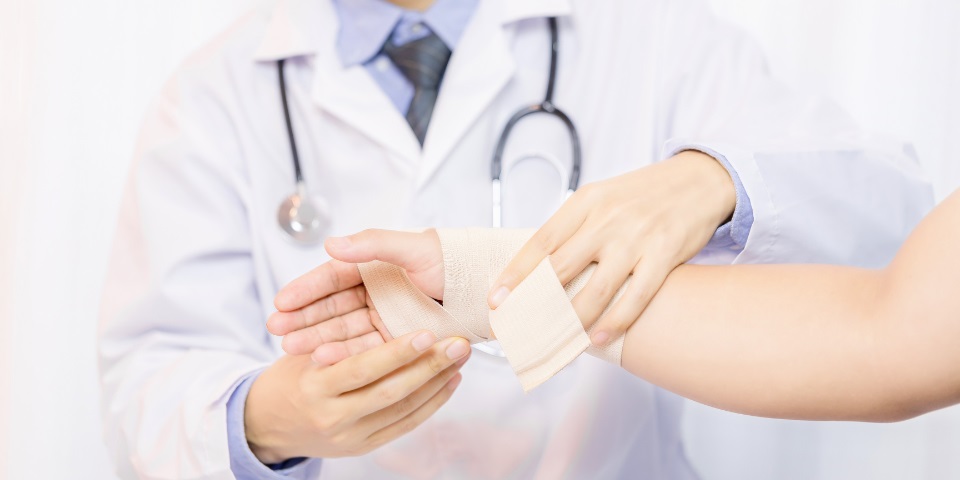
Orthopedic injuries are a significant concern for people of all ages, as they can lead to pain, reduced mobility, and a lower quality of life. While orthopedic surgeons play a crucial role in diagnosing and treating these injuries, prevention is often the best approach to maintaining musculoskeletal health. In this article, we will explore common orthopedic injuries and provide valuable insights into how to prevent them. Whether you’re an athlete, a weekend warrior, or simply looking to maintain a healthy musculoskeletal system, understanding these injuries and their prevention strategies is essential.
Sprains And Strains
One of the most common injuries to the bones and joints is a sprain or strain. These injuries typically involve damage to ligaments (sprains) or muscles and tendons (strains). They can occur during physical activities, sports, or even everyday tasks. The best way to prevent sprains and strains is through proper warm-up and stretching exercises before physical activity. Additionally, maintaining good conditioning and strength in the muscles and ligaments can help reduce the risk of these injuries.
Fractures
Fractures, or broken bones, can result from traumatic accidents or falls. While accidents can happen, there are preventive measures you can take to minimize the risk. Always use protective gear, such as helmets and knee pads, when engaging in high-risk activities like cycling, skateboarding, or contact sports. Pay attention to your surroundings and take precautions to avoid slips and falls, especially in icy or slippery conditions.
Rotator Cuff Injuries
People who do activities that require them to lift or throw big things, like throwing a baseball, often hurt their rotator cuff. To prevent these injuries, it’s essential to maintain good shoulder strength and flexibility. Perform regular rotator cuff exercises to strengthen the muscles that stabilize your shoulder joint. Proper technique and form during activities that stress the shoulder can also help prevent rotator cuff injuries.
Tennis And Golf Elbow
Tennis elbow (lateral epicondylitis) and golf elbow (medial epicondylitis) are both injuries that happen when you use your elbow muscles too much. These situations can happen to people who don’t play tennis or golf, despite their names. To avoid these accidents, it’s important to use the right gear, keep good form, and not push yourself too far. Also, doing exercises to make the muscles in your wrist stronger can help keep these painful situations from happening.
Back Injuries
Back injuries can be particularly debilitating, affecting your ability to perform daily activities. Proper lifting techniques are crucial to preventing back injuries. When lifting heavy objects, remember to bend at your knees and keep your back straight. Regular workouts that build your core can also help support your spine and lower your risk of back injuries.
ACL Tears
Anterior Cruciate Ligament (ACL) tears happen a lot in games like soccer, basketball, and skiing that require quick stops, turns, or changes in direction. While accidents can still occur, athletes can reduce their risk by practicing proper jumping and landing techniques, strengthening the muscles around the knee, and using knee braces when necessary.
Osteoarthritis
When your joints get osteoarthritis, they wear out over time, which can be very painful and make it hard to move around. Osteoarthritis may be caused by genes, but some things can be done to lower the chance. Keeping a healthy weight and staying busy can help keep your joints from getting too stressed out. Joint health can also be improved by eating right and taking vitamins.
Stress Fractures
Broken bones called stress fractures happen when bones are overused or stressed over and over again. A lot of players who do high-impact sports have them. To avoid stress fractures, you should slowly raise the speed and length of your workouts, make sure you wear the right shoes and plan for rest days.
Carpal Tunnel Syndrome
Carpal Tunnel Syndrome (CTS) is often caused by doing the same things over and over with your hands and wrists, like typing or using hand tools. To prevent CTS, take regular breaks during repetitive tasks to rest your hands and wrists. Maintain proper wrist ergonomics by using wrist supports and ensuring your workspace is set up correctly.
Conclusion
While orthopedic injuries can be painful and disruptive, many of them can be prevented with proactive measures. Proper warm-up, stretching, strength training, and using appropriate protective gear are essential strategies for reducing the risk of common orthopedic injuries.
By doing these things, people can greatly lower their risk of getting orthopedic injuries and live a busy, pain-free life. If you ever do experience an orthopedic injury, don’t hesitate to seek the expertise of an orthopedic surgeon for proper diagnosis and treatment. While it’s best to avoid getting hurt in the first place, acting quickly after an injury can improve results and speed up the return to a busy lifestyle.




